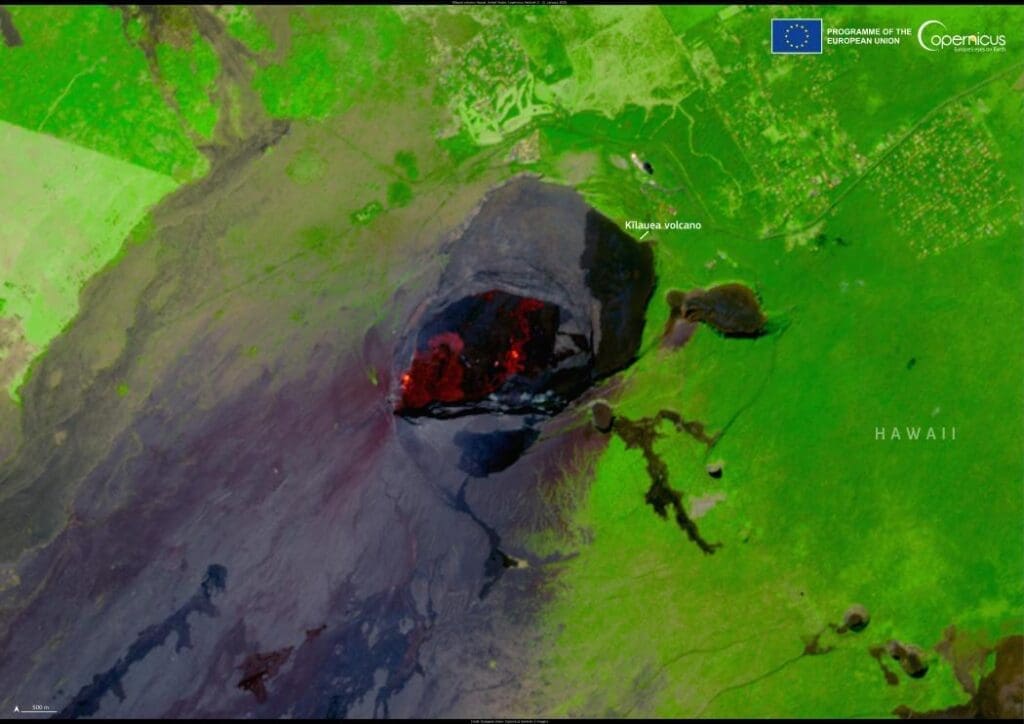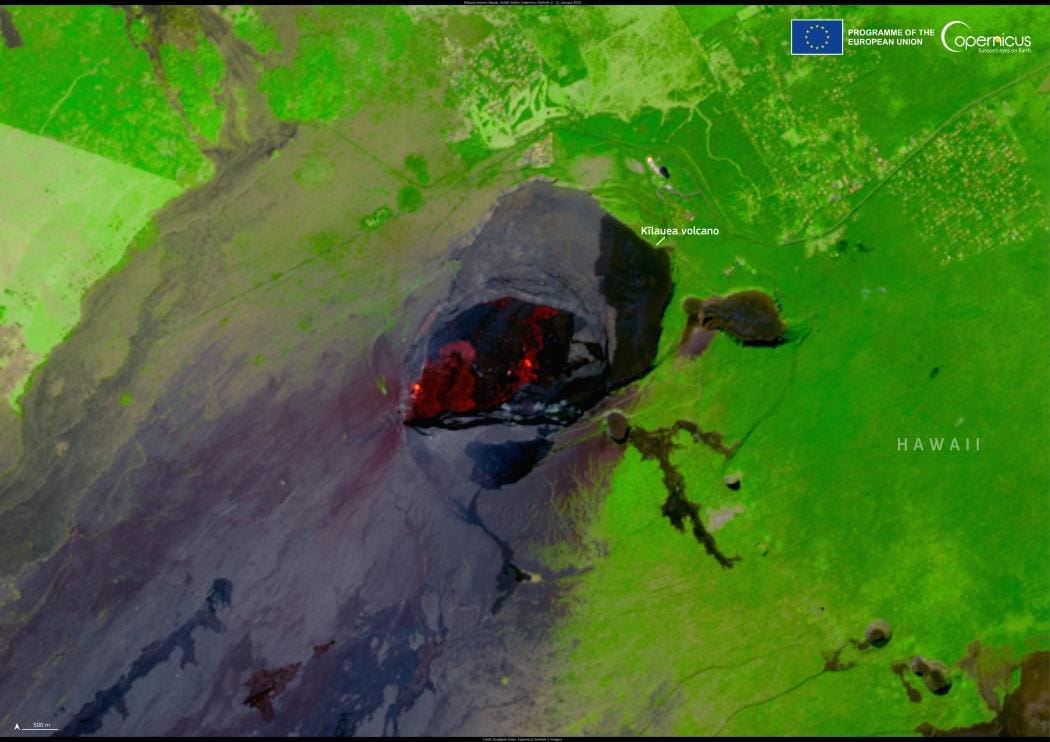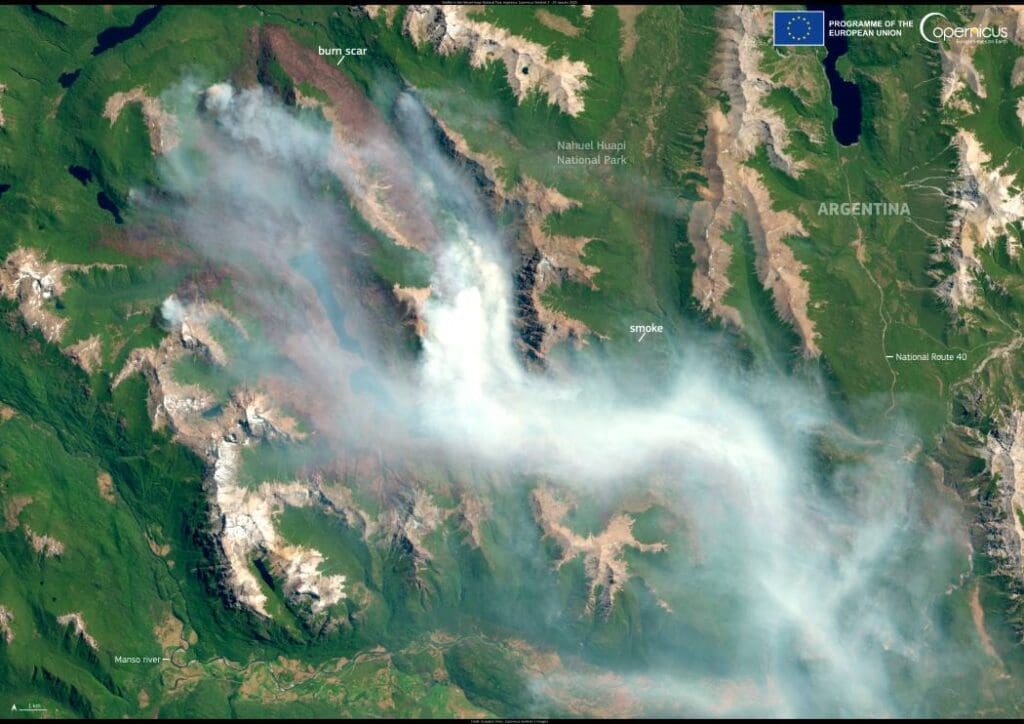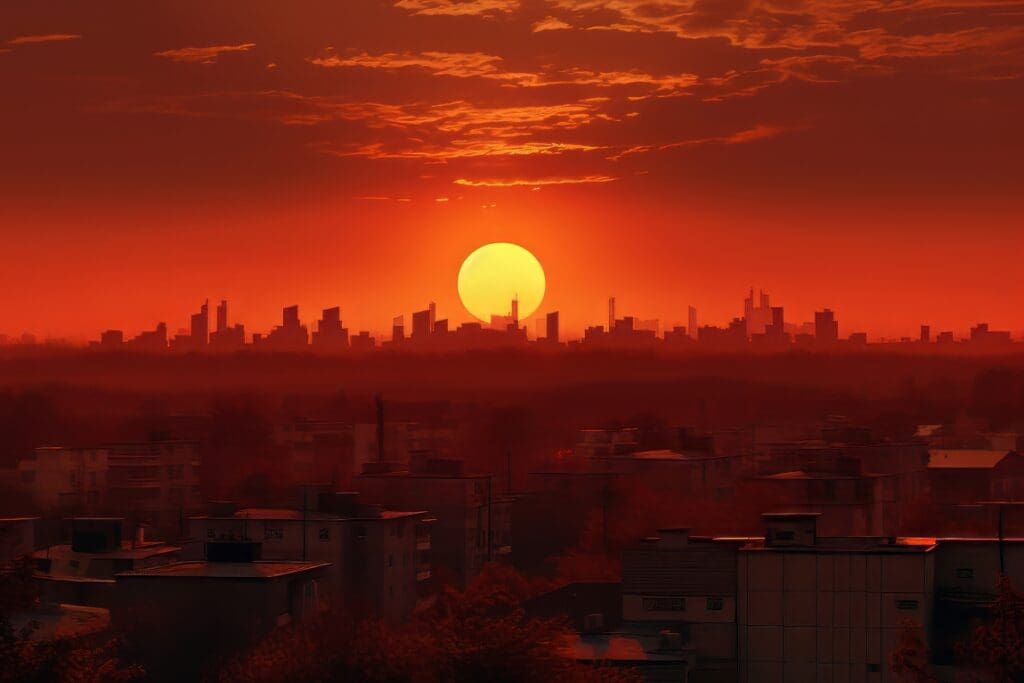Between January 15 and 18, 2025, Hawaii’s Kīlauea volcano entered a new eruptive phase, marking the fourth eruption since December 23, 2024. This renewed activity captivated volcanologists and the public alike, offering a dramatic display of nature’s power.
The Hawaiian Volcano Observatory confirmed that the eruption was confined to the Halemaʻumaʻu crater within the Kīlauea summit caldera. A striking aspect of this episode was the presence of episodic lava fountaining, a rare phenomenon that has not been seen in Kīlauea’s recent eruptions.

This image, captured by the Copernicus Sentinel-2 satellite on January 21, 2025, reveals the lingering thermal signature of cooling lava from the eruption.
The Copernicus Sentinel satellites, operated by the European Space Agency, continue to play a vital role in monitoring volcanic activity worldwide, providing invaluable data to researchers and authorities. These insights are crucial for improving safety measures for communities living in the shadow of volcanoes.
Featured image credit: European Union, Copernicus Sentinel-2 imagery




